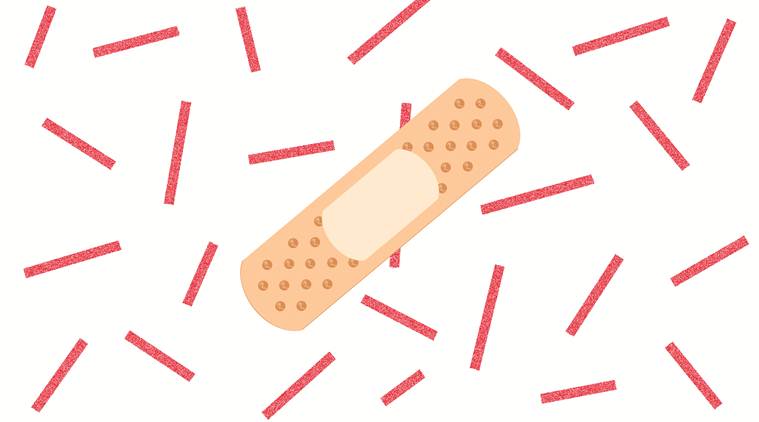Missing the healing touch
Modest increases in budgetary allocation to health should have been directed towards reviving primary healthcare — not an insurance scheme that does not cover a majority of the treatments.

Public interest in the Union budget was particularly pronounced because this is an election year. People expected some measures to strengthen the country’s ailing public healthcare system. There is, indeed, an increase of more than Rs 7,000 crore in nominal terms from last year’s expenditure on health in this year’s budget — the outlay has increased from Rs 56,045 crore to Rs 63,298 crore. Accounting for inflation, this amounts to a 9.2 per cent increase in real terms.
However, the much-needed strengthening of the country’s primary healthcare system has, once again, taken a backseat, indicating the government’s misplaced priorities. Allocation under the National Rural Health Mission (NRHM) — which provides funds for rural primary healthcare — has been reduced in real terms (accounting for inflation). Its share in the health component of the budget has declined steeply over the past four years — from 52 per cent in 2015-16 to 41 per cent this year. Within the NRHM, there have been budget cuts for reproductive and child healthcare projects and maintenance of rural healthcare infrastructure. The allocation for controlling communicable diseases under the NRHM has been reduced in real terms. Communicable diseases like TB, diarrhoea, pneumonia, hepatitis and other infections are still a major problem for India. Conversion of health sub-centres to health and wellness centres that put more emphasis on non-communicable diseases does not augur well for primary care in the country. Neglecting these major components of primary care seems to be a continuation of the policies that have led to the virtual dismantling of the rural public health infrastructure.
The National Urban Health Mission has been allocated only Rs 950 crore — this, when the estimated average yearly budgetary requirement for the mission is Rs 3,391 crore from Central funds. Allocation for tertiary care components — the Pradhan Mantri Swasthya Suraksha Yojana (a programme for building-AIIMS like institutes), for example — has also remained stagnant in real terms. Funds for upgrading district hospitals have been reduced by 39 per cent in real terms.
Majority of the increase in the budget’s health component has gone to fund the Rs 6,556-crore Pradhan Mantri Jan Arogya Yojana (PMJAY). The scheme is supposed to give a Rs 5-lakh annual coverage for in-patient care to 10-crore poor families. However, the budgetary allocations do not match up to that promise. The National Sample Survey’s (NSS) health data of 2014 shows that in an estimated total 24.85 crore families in India, there were 5.72 crore cases of hospitalisation. By that calculation, out of the 10-crore families, there would be roughly 2.3 crore hospitalisations in a year. This means that from the Rs 6,556 crore government funds, health insurance agencies on average have only Rs 2,850 to pay per hospitalisation (assuming there are no administrative costs or insurance overheads). The average out-of-pocket expenditure (OOPE) per hospitalisation is much higher — around Rs 15,244 as per NSS 2014 data, which amounts to Rs 19,500 in 2019-20 assuming a 5 per cent annual inflation. The PMJAY’s budgetary provisions for insurance agencies will barely cover 15 per cent of this expenditure.
In the allied sectors, there was an alarming under-utilisation of funds in the 2018-19 fiscal. The revised estimates for the year show that the National Rural Drinking Water Mission and the Pradhan Mantri Matru Vandana Yojana have utilised only 78 per cent and 50 per cent of the budgeted funds, respectively. The government’s flagship programme, Swachh Bharat Mission (rural), also did not fully utilise the Rs 15,343 crore allocated in 2018-19. Its allocation has been further reduced to Rs 10,000 crore for 2019-20. The neglect of the ICDS under the UPA government has accelerated since 2014. This year’s budgetary allocation for the scheme, in real terms, is still a touch below the expenditure of 2013-14.
The modest increase in budgetary allocations in health should have been prioritised towards improving the worn-out public sector district hospitals, community health centres, primary health centres and sub-centres in under-served areas. Instead, public money has been inefficiently used for the more expensive intervention of insurance, which can cover just 15 per cent of only in-patient OOPE.
NSS 2014 data shows that 97 per cent episodes of illnesses in India are treated in out-patient care centres and this accounts for 63 per cent of the overall medical expenditures. So, a majority of the treatment and expenditures are not even covered by the insurance scheme for in-patient treatment. Neglecting public health infrastructure and public provisioning to make way for monetary support in the form of insurance for buying healthcare services from the private sector is not pro-poor policy. It is transfer of public funds to the corporate sector in the name of pumping technological interventions. There is no surprise that the private sector has welcomed the government’s insurance initiative.








































No hay comentarios:
Publicar un comentario